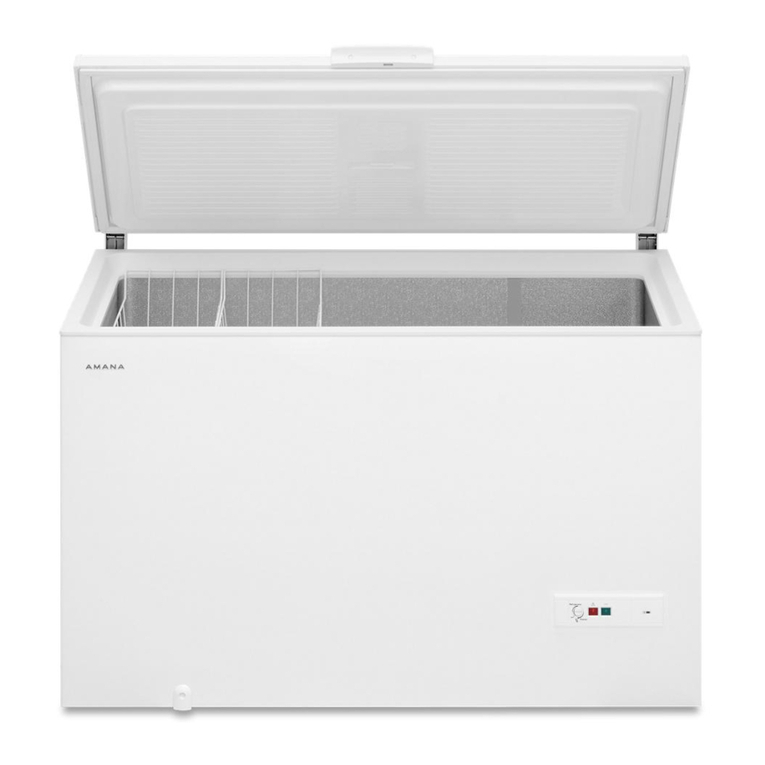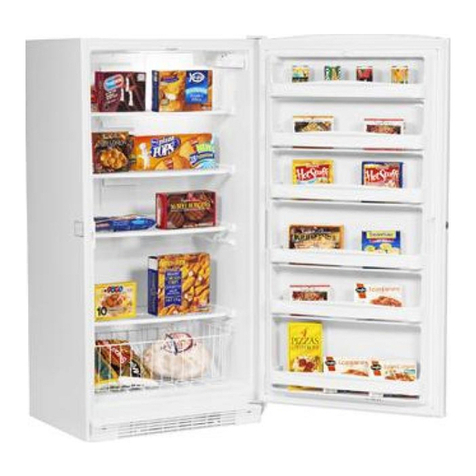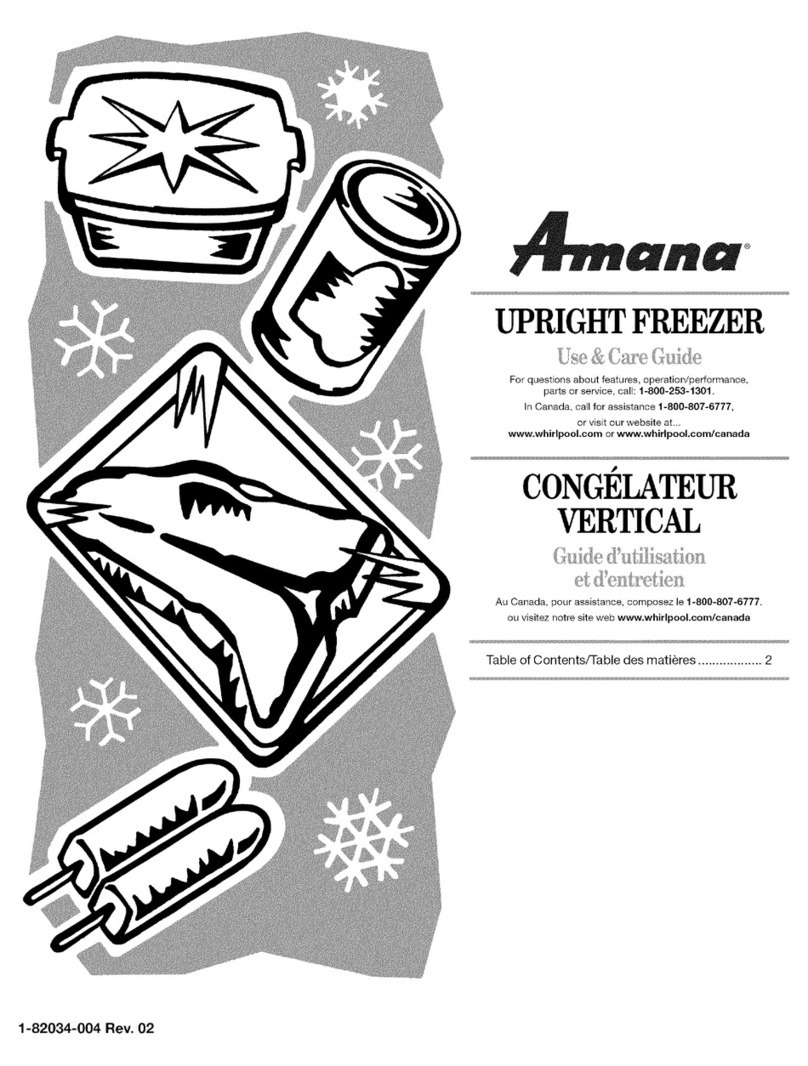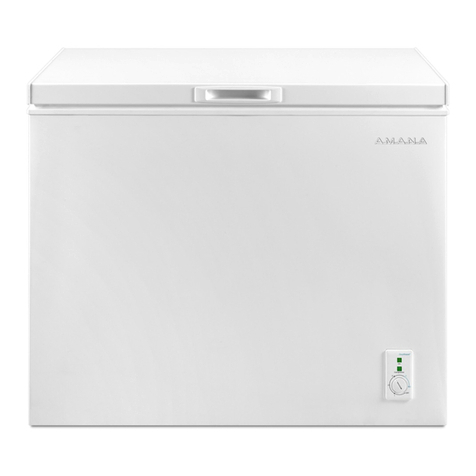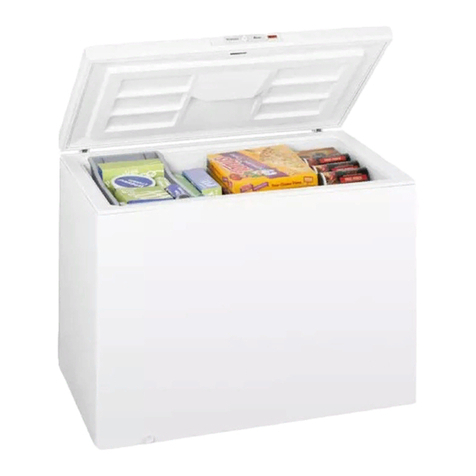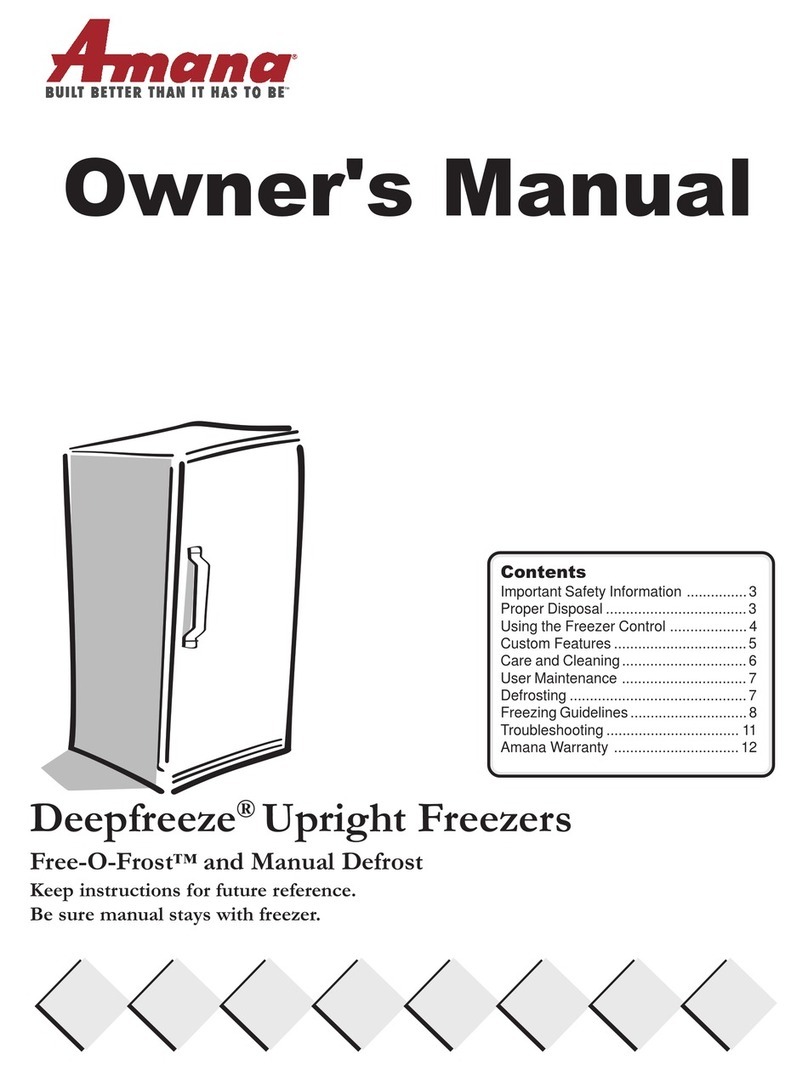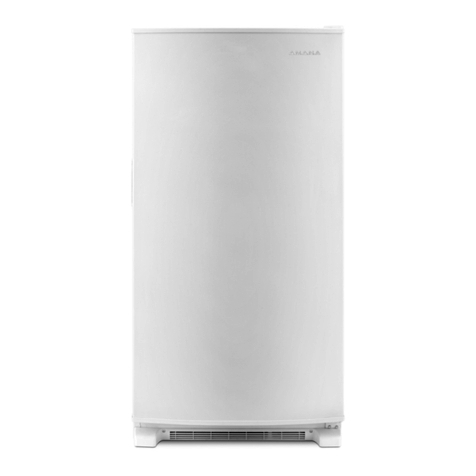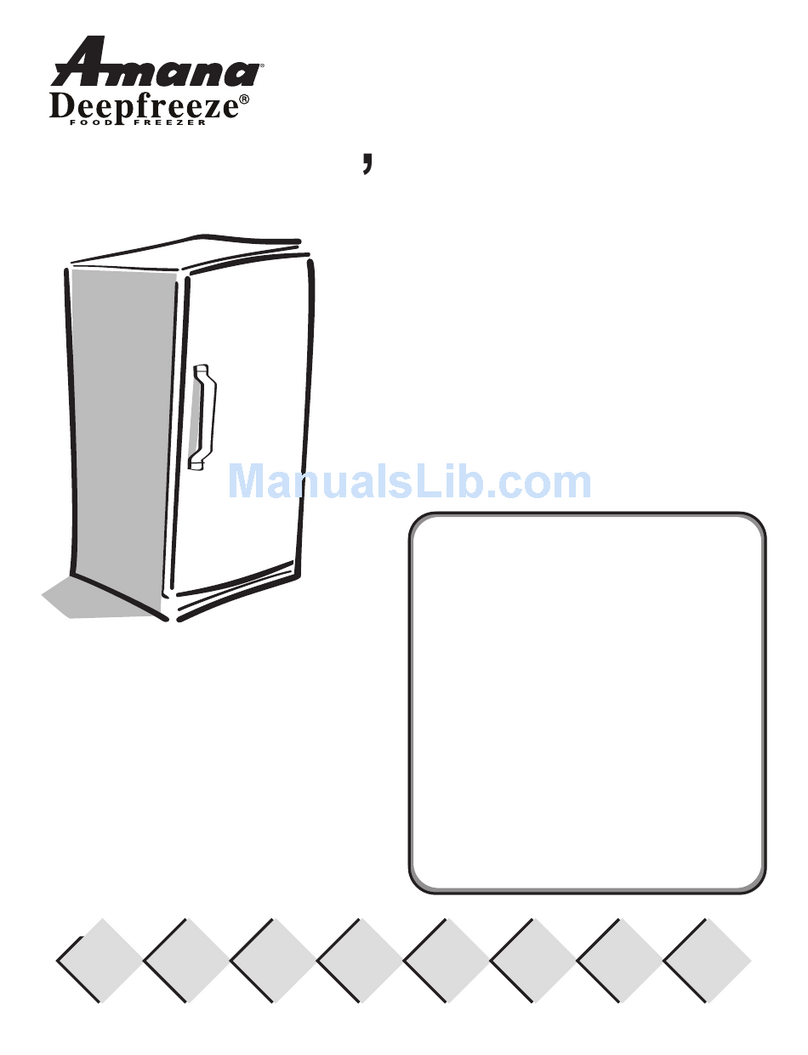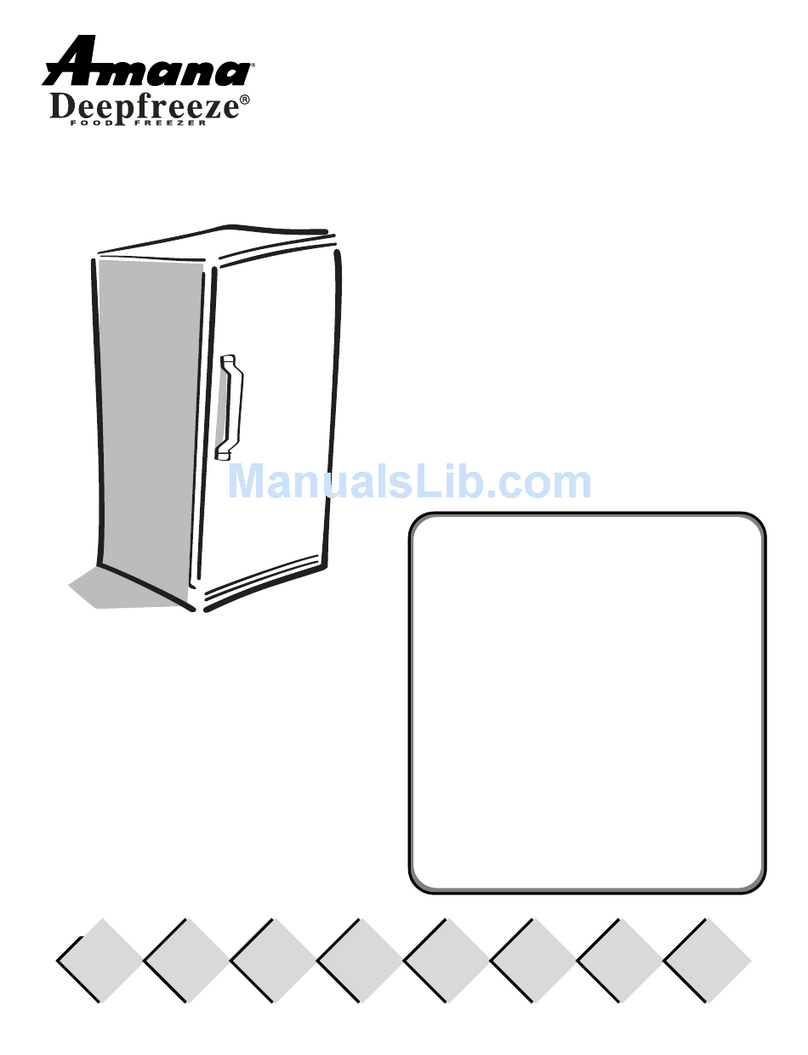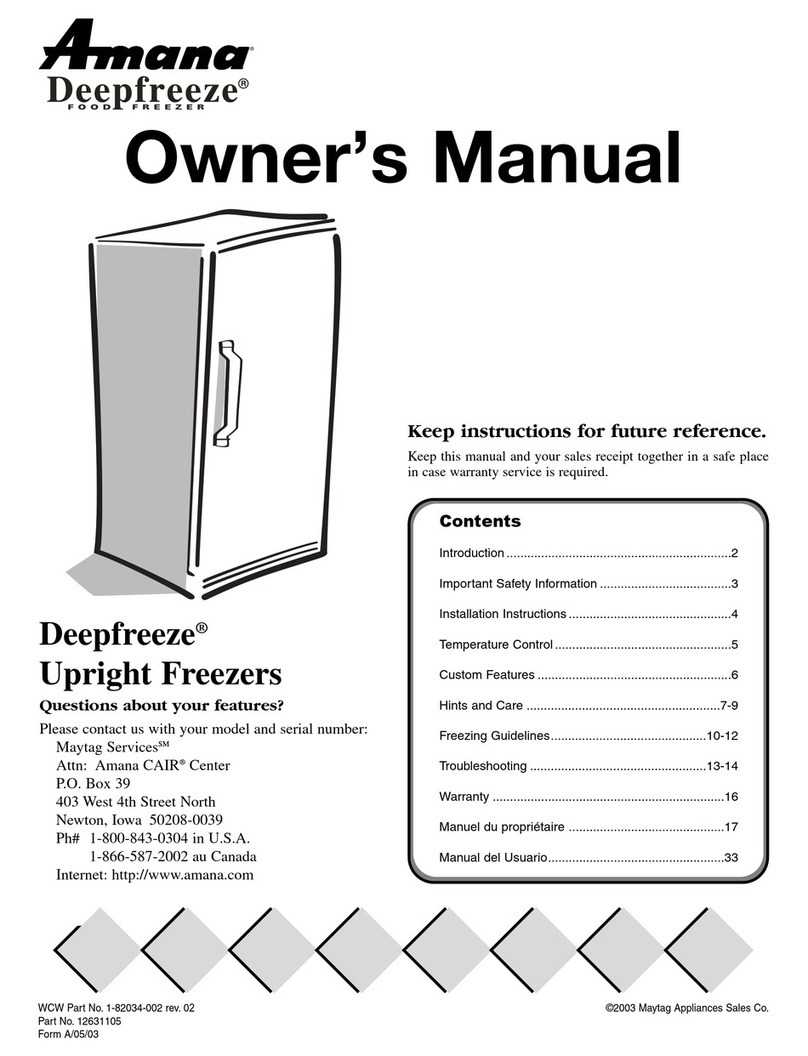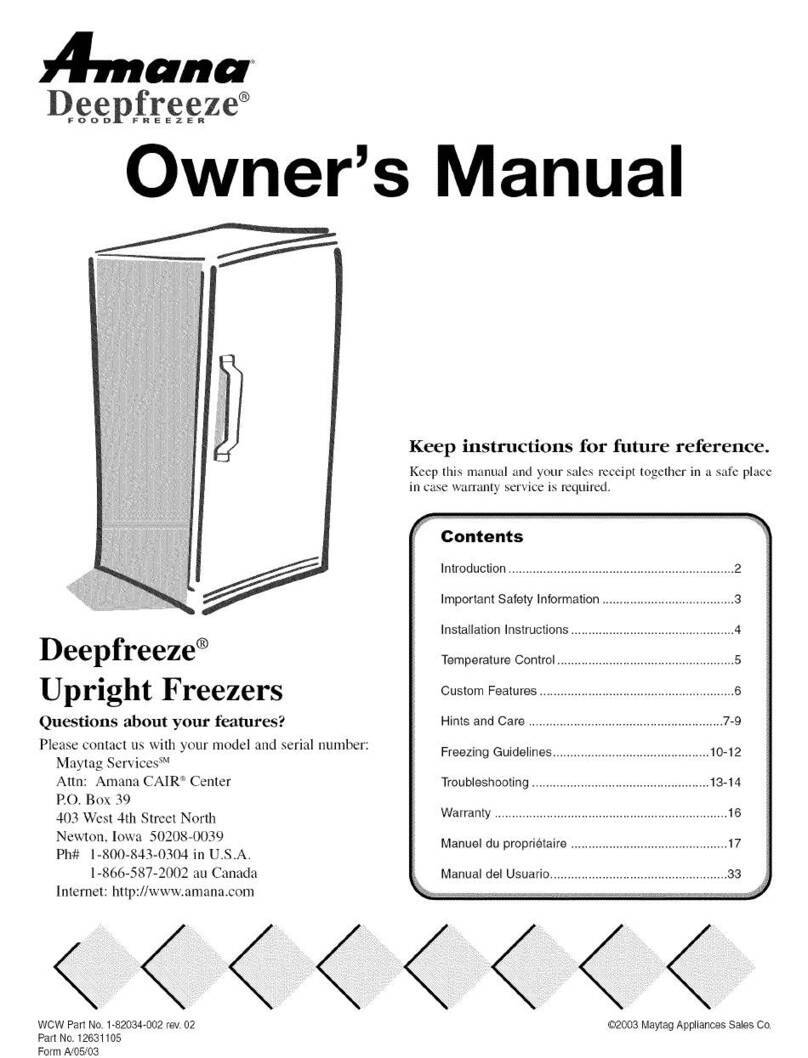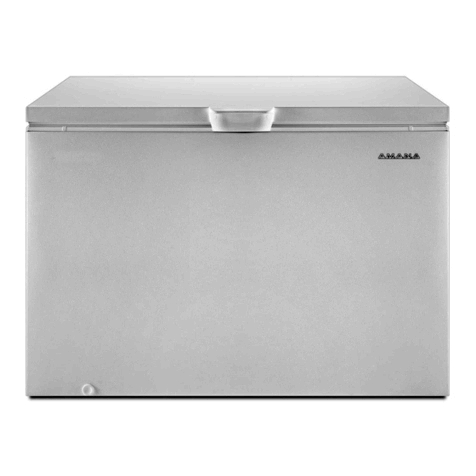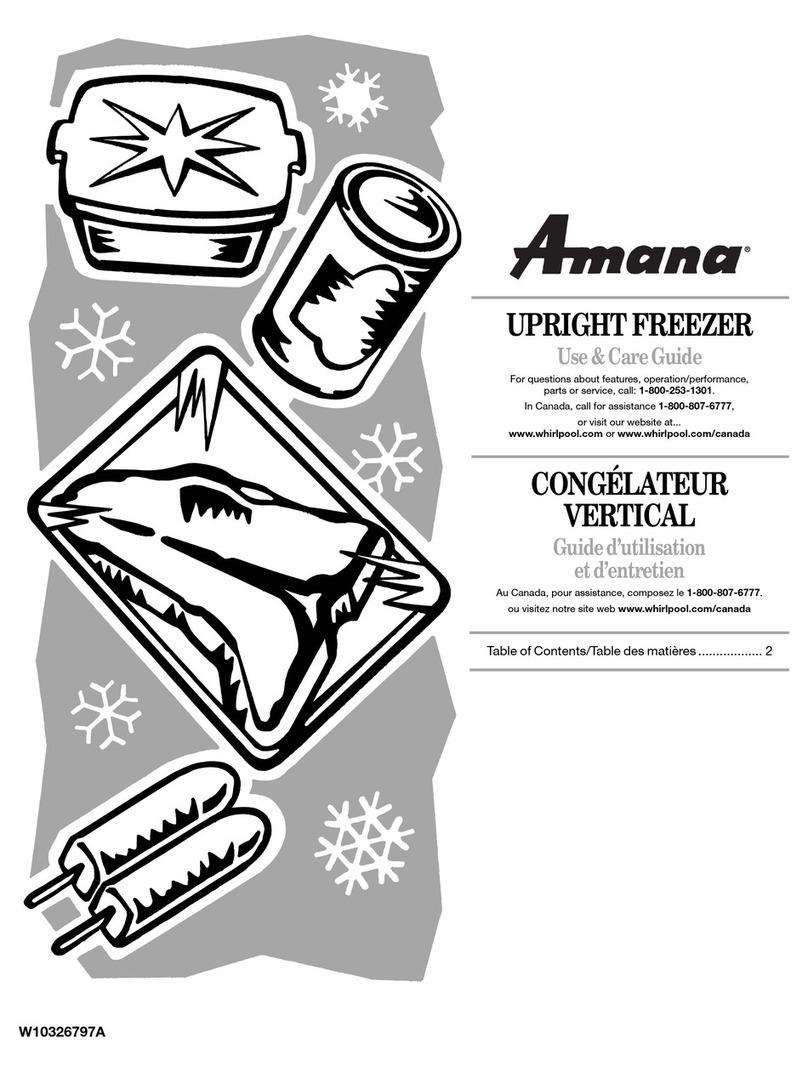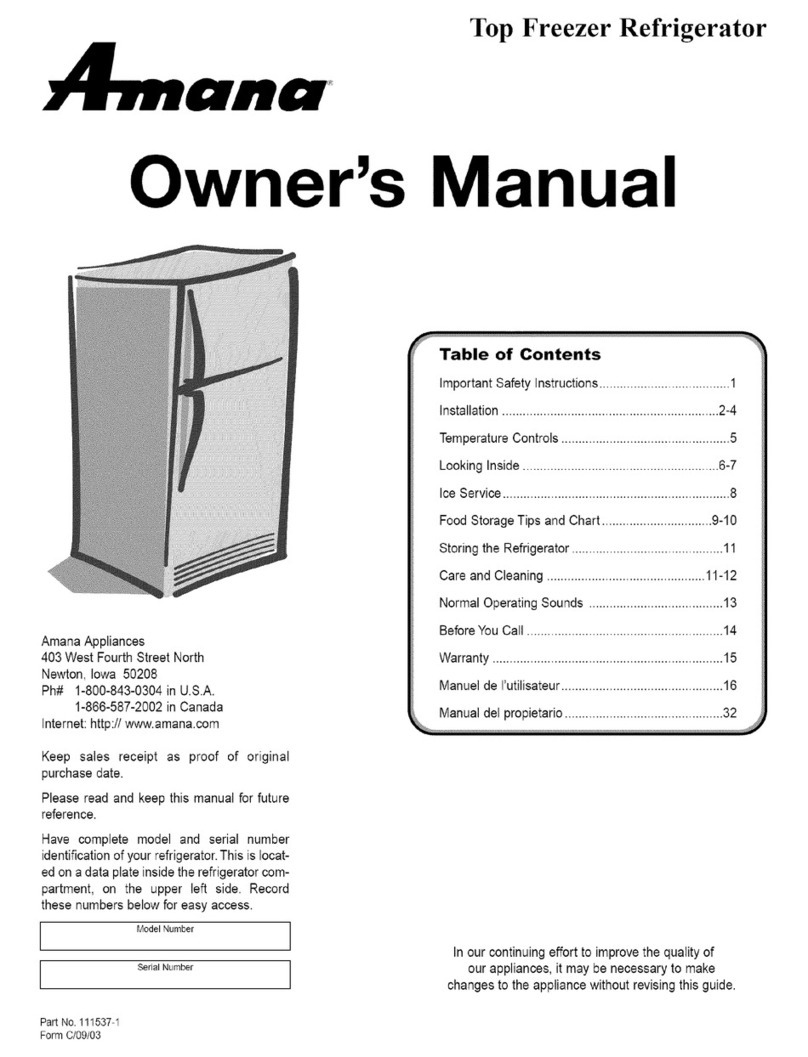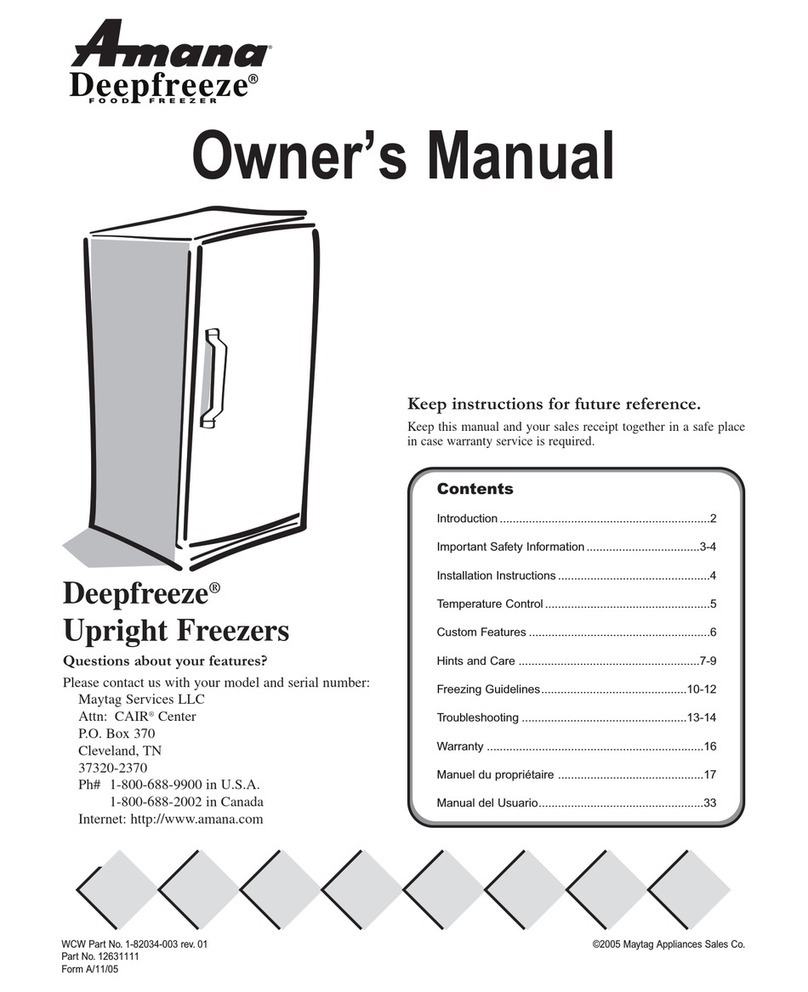
3 RS1500000 Rev. 2
Important Information ................................................. 2
Model Identification .................................................... 4
Installation Instructions
Unpacking ............................................................... 5
General ................................................................... 5
Location................................................................... 5
Electrical Connection ............................................... 5
Door Handle ............................................................ 6
Leveling ................................................................... 6
Test After Installation ............................................... 6
General Instructions
Electrical Requirements .......................................... 7
Asure Extended Service Plan .............................. 7
Proper Disposal of your Freezer .............................. 7
Model Identification ................................................. 7
Operating Instructions
Setting Controls ....................................................... 8
Temperature Control ............................................... 8
Audible Alarm (Some models) ................................. 8
Features .................................................................. 9
Reversible Rack (some models) ............................. 9
Freezing Guide ........................................................ 9
Care and Cleaning
General ................................................................. 10
Adhesives.............................................................. 10
Door Gaskets ........................................................ 10
Odor Removal ....................................................... 10
Defrosting .............................................................. 11
Light Bulb (some models) ...................................... 11
General Tips
Energy Tips ........................................................... 12
Vacation Tips ......................................................... 12
Normal Operating Sounds ..................................... 12
Before Calling For Service..................................... 12
Operating Sounds ................................................. 13
Component Testing
Refrigeration System Test Procedures .................. 14
Testing Main Condenser ........................................ 15
Testing for Leaks ................................................... 16
Electrical System ................................................... 16
Compressor Electrical Tests .................................. 16
Testing Compressor Direct .................................... 16
Capacitor ............................................................... 17
Overload Protector ................................................ 17
Testing Overload Protector .................................... 17
PTC Relay ............................................................. 18
Testing PTC Relay................................................. 18
Interior Light and Switch ........................................ 18
Checking Control Operation .................................. 18
Temperature Control ............................................. 19
Defrost Timer ........................................................ 19
Checking Timer ..................................................... 20
Defrost Heater and Thermostat
No Defrosting Models ............................................ 20
Freezer Fan No-Defrosting Models ....................... 21
Testing Freezer Fan Motor .................................... 21
Troubleshooting ................................................... 23-25
Disassembly Procedures
Replacing Dryer..................................................... 26
Replacing Compressor .......................................... 26
Replacing Heat Exchanger
Refrigerated Shelf Model ....................................... 27
Replacing Heat Exchanger
No-Defrosting Models............................................ 28
Replacing Freezer Shelving
Refrigerated Shelf Models ..................................... 29
Replacing Freezer Coil No-Defrosting Models ....... 30
Replacing Light Switch .......................................... 31
Replacing Control .................................................. 31
Replacing Heater................................................... 32
Replacing Freezer Fan Motor ................................ 32
Cabinet Door Assembly ......................................... 33
Door Handle .......................................................... 34
Door Lock Assembly ............................................. 34
Removing Door Lock Assembly ............................ 35
Cabinet Door Alignment ........................................ 35
Checking Gasket Seal ........................................... 35
Improving Gasket Seal .......................................... 35
Hinge Adjustments ................................................ 35
Cabinet Assembly ................................................. 36
Service Information
System Operation.................................................. 37
Checking Operational Pressures ........................... 38
Operational Testing ............................................... 39
Service Hints ......................................................... 39
Refrigeration System Complaints .......................... 40
Refrigerant Leaks .................................................. 41
Evacuation and Charging Procedures ................... 42
HFC134a Service Information ............................... 43
Health, Safety, and Handling ................................. 44
Drier Replacement ................................................ 44
Replacement HFC134a Service Compressor........ 45
Refrigerant Charge ................................................ 45
Leak Testing .......................................................... 45
Evacuation and Charging ...................................... 45
Dehydrating Sealed Refrigeration System ............. 47
Brazing .................................................................. 47
Refrigerant Precautions ......................................... 47
Open Lines ............................................................ 47
Line Piercing Valves .............................................. 48
Altitude Adjustment ............................................... 48
Cabinet Shell ......................................................... 49
Cabinet Liner (Food) ............................................. 49
Drain System ......................................................... 49
Wiring Diagram and Schematic ........................... 50-52
Table of Contents
